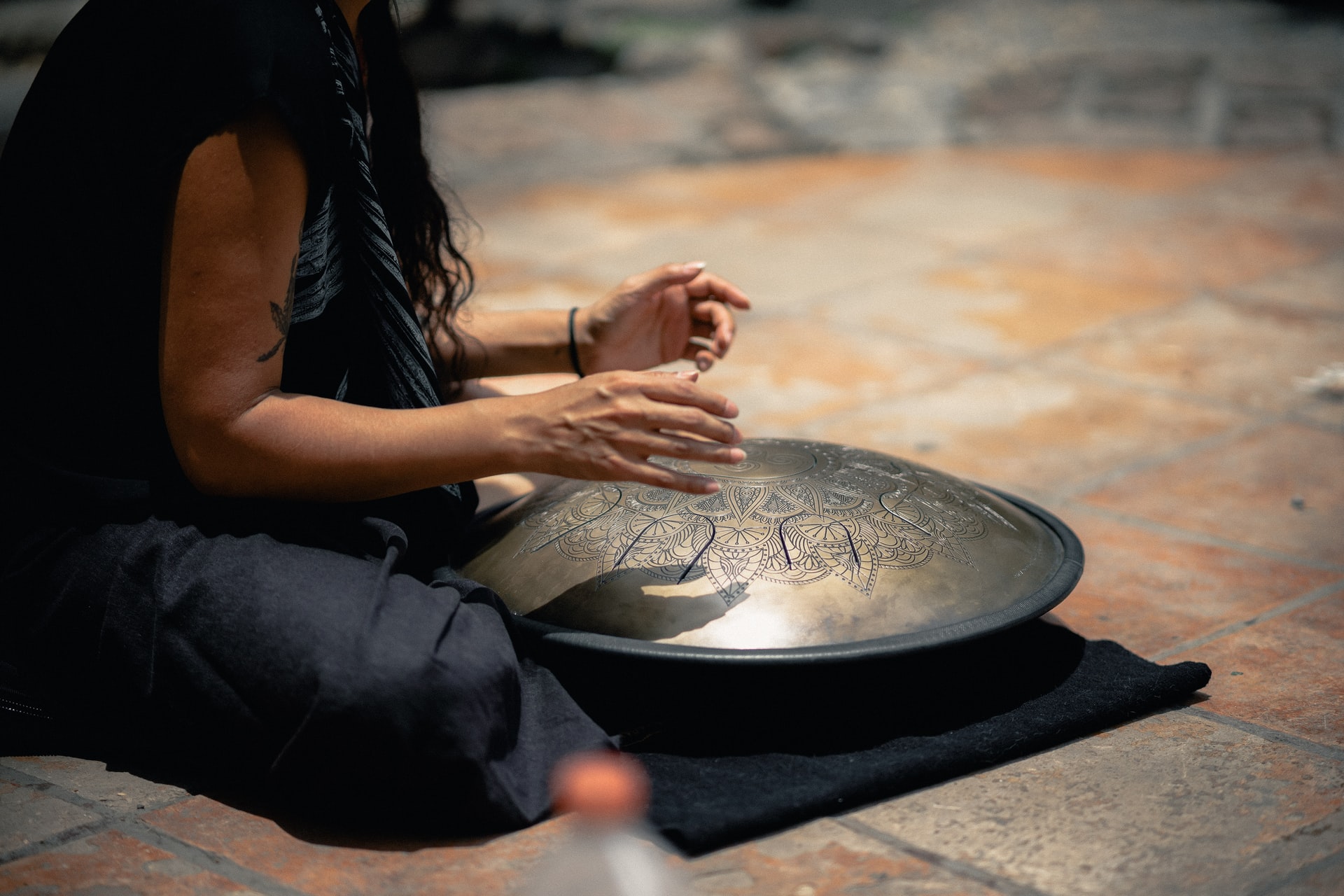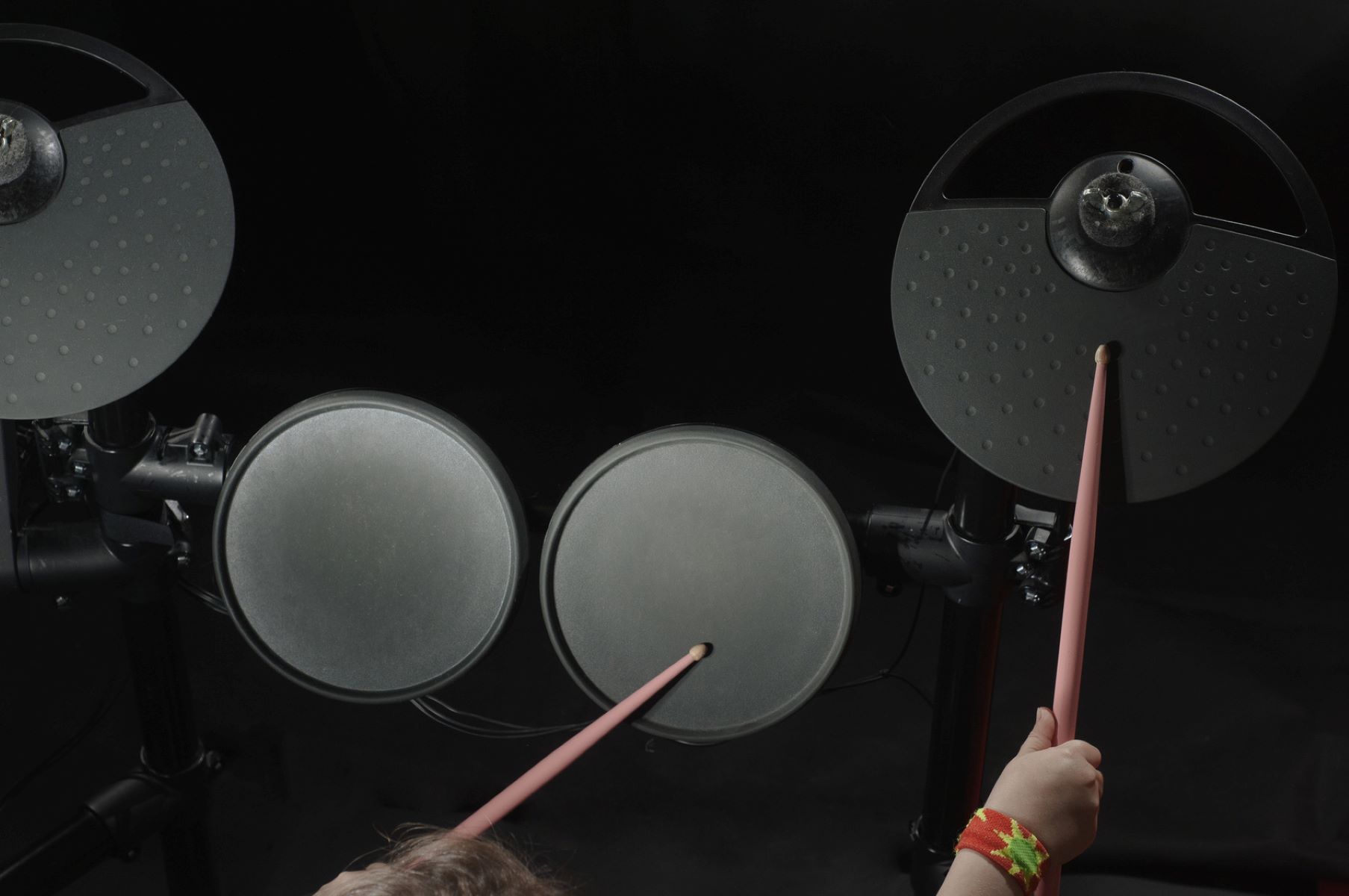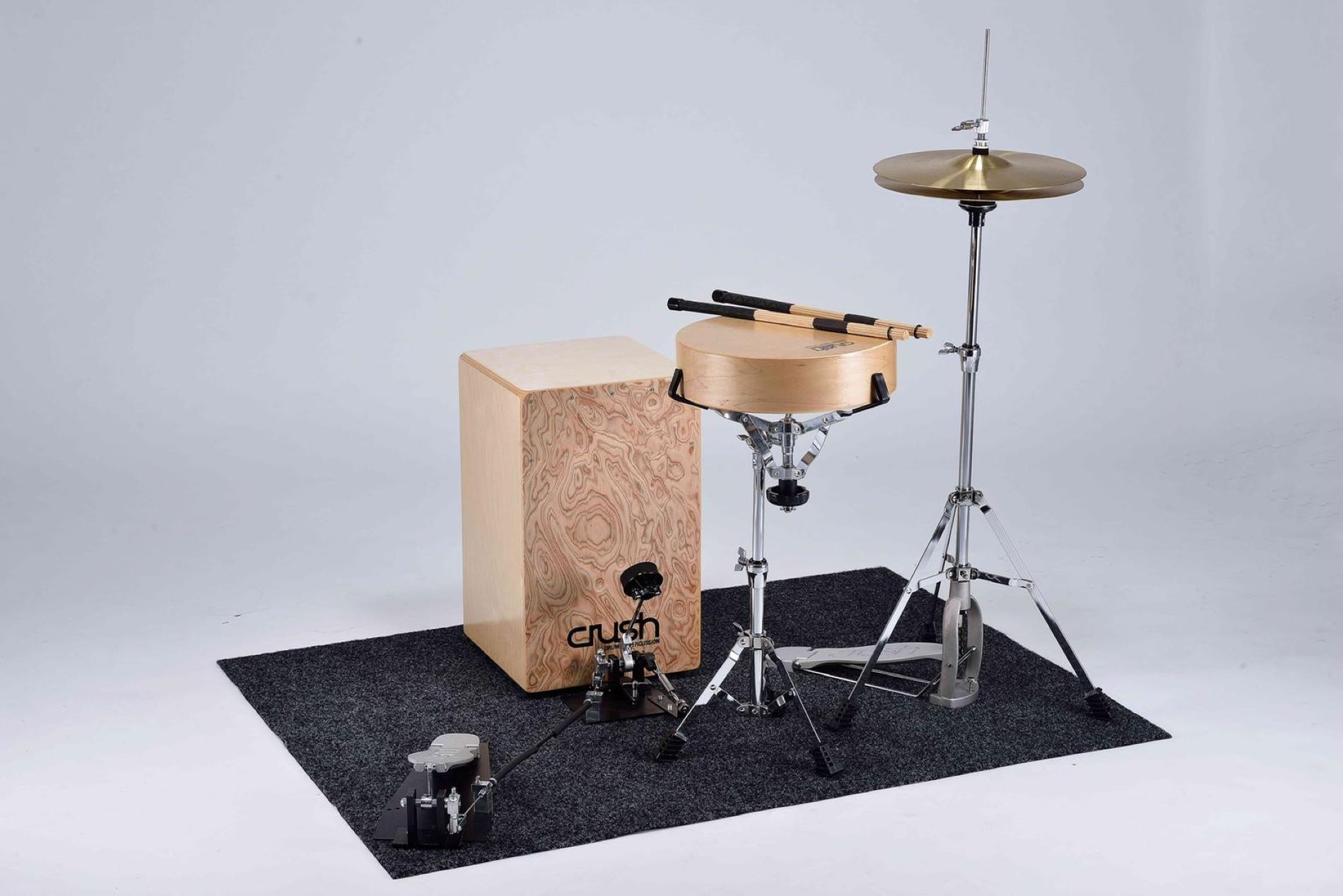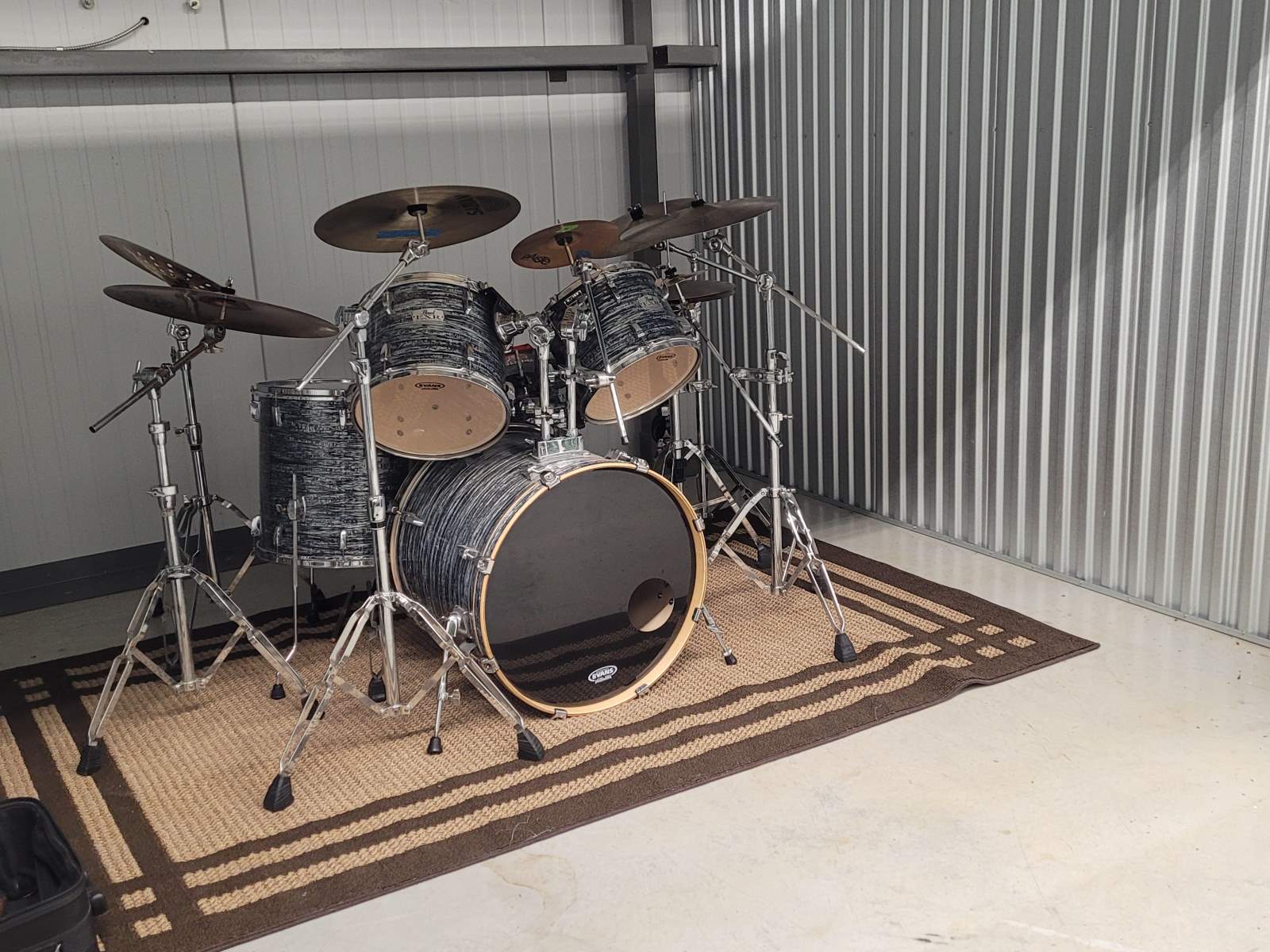Home>Instruments>Drums>How To Play Tenor Drums


Drums
How To Play Tenor Drums
Published: February 7, 2024
Learn how to play tenor drums with our comprehensive guide. Master the techniques and improve your drumming skills. Perfect for beginners and experienced drummers alike.
(Many of the links in this article redirect to a specific reviewed product. Your purchase of these products through affiliate links helps to generate commission for AudioLover.com, at no extra cost. Learn more)
Table of Contents
Introduction
Introduction
Welcome to the exciting world of tenor drums! Whether you’re a beginner looking to learn a new instrument or a seasoned percussionist seeking to expand your skill set, playing the tenor drums offers a unique and rewarding musical experience. These drums, also known as quads or multiple-tenors, are a staple of marching bands and drum corps, adding depth, complexity, and visual flair to the overall sound and performance.
In this comprehensive guide, we’ll explore everything you need to know to start playing tenor drums with confidence and skill. From understanding the basics and selecting the right equipment to mastering proper technique and learning advanced rhythms, this article will serve as your roadmap to becoming a proficient tenor drummer.
Whether you’re drawn to the thunderous power of the bass drums, the crisp articulation of the snare, or the melodic richness of the tenor drums, each percussion instrument brings its own unique contribution to the ensemble. The tenor drums, with their multiple pitches and dynamic playing style, offer a captivating blend of rhythm and melody that demands precision, coordination, and creativity.
So, grab your drumsticks, set up your practice space, and get ready to embark on an exhilarating rhythmic journey. Whether you’re aiming to perform in a marching band, drumline, or simply jam with friends, the skills and insights you’ll gain from this guide will set you on the path to tenor drum mastery.
Understanding the Basics of Tenor Drums
Before diving into the world of tenor drums, it’s essential to grasp the fundamental aspects of these versatile percussion instruments. Unlike the traditional snare or bass drums, tenor drums are unique in their setup and playing technique, offering a wide range of tonal possibilities and rhythmic complexity.
Tenor drums typically consist of four or more individual drums of varying sizes, mounted on a carrier that allows the drummer to play them while standing or marching. The drums are arranged in a semicircular fashion, with the smallest drum positioned on the player’s far left and the largest drum on the far right. Each drum produces a distinct pitch, enabling the drummer to create melodic patterns and harmonies within the ensemble’s overall sound.
One of the defining features of tenor drumming is the use of “spock” drums, which are additional drums mounted between the primary drums. The inclusion of spock drums further expands the tonal range and creative possibilities, adding depth and complexity to the music.
Playing the tenor drums requires a combination of hand dexterity, coordination, and spatial awareness. Drummers use a combination of traditional grip and matched grip techniques to produce clear, articulate sounds while navigating the drum arrangement seamlessly. Additionally, mastering the art of rim clicks, crossovers, and sweeps is essential for executing intricate rhythmic patterns and fills.
Understanding the role of the tenor drums within the percussion ensemble is equally important. While the snare and bass drums provide foundational rhythm and drive, the tenor drums contribute melodic and textural elements, enhancing the overall musical tapestry. As a result, tenor drummers must maintain a keen sense of timing, dynamics, and musical expression to complement the ensemble’s collective performance.
Whether you’re drawn to the melodic possibilities of the tenor drums or intrigued by the technical challenges they present, mastering the basics is the first step toward becoming a proficient and expressive tenor drummer. With a solid foundation in place, you’ll be well-prepared to explore the myriad rhythms, techniques, and musical styles that make the tenor drums a captivating instrument in any percussion setting.
Choosing the Right Equipment
When venturing into the world of tenor drumming, selecting the appropriate equipment is crucial for achieving optimal performance and comfort. From drum shells and heads to carriers and drumsticks, each component plays a vital role in shaping your playing experience and sonic output.
First and foremost, the drum shells themselves are a key consideration. Modern tenor drums are typically constructed from high-quality materials such as birch, maple, or fiberglass, each offering distinct tonal characteristics and durability. While birch drums are known for their bright, focused sound, maple drums deliver warmth and resonance. Fiberglass drums, on the other hand, provide a balanced tonal profile and robust projection. It’s essential to explore different shell materials and their sonic properties to find the ideal match for your musical preferences.
Equally important are the drumheads, which significantly influence the drums’ overall tone and responsiveness. Remo, Evans, and Aquarian are reputable brands that offer a variety of drumhead options tailored specifically for tenor drums. Coated heads impart a warmer, more controlled sound, while clear heads produce a brighter, more open tone. Experimenting with different head types and combinations can help you achieve the desired tonal balance and articulation for your playing style.
When it comes to carriers, comfort and adjustability are paramount. A well-designed carrier should distribute the weight of the drums evenly, minimize strain on the player’s back and shoulders, and allow for effortless movement while performing. Look for carriers with padded harnesses, adjustable straps, and sturdy construction to ensure long-term comfort and ergonomic support.
Drumsticks are another essential component that directly impacts your playing technique and sound production. Tenor drumsticks, also known as “mallets,” come in various weights, materials, and tip shapes, each influencing the articulation, volume, and rebound of the sticks on the drumheads. Whether you prefer nylon or felt tips, lightweight or heavyweight mallets, finding the right pair can significantly enhance your control and expression while playing.
Lastly, accessories such as stick tape, stick holders, and drum cases are valuable additions to your tenor drumming arsenal, providing convenience, protection, and organization for your equipment during rehearsals and performances.
By carefully considering the quality, materials, and ergonomic features of your tenor drum equipment, you can create a setup that not only elevates your playing experience but also inspires confidence and creativity as you delve into the rhythmic world of tenor drumming.
Proper Technique and Posture
Mastering proper technique and posture is essential for tenor drummers to achieve fluidity, precision, and endurance during performances. From hand positioning and body alignment to movement efficiency, adopting sound ergonomic practices can significantly enhance your playing experience and overall musical output.
First and foremost, maintaining a balanced and relaxed posture is crucial for preventing strain and promoting optimal movement. Whether standing or marching, ensure that your shoulders are relaxed, your back is straight, and your feet are firmly grounded. Distribute your weight evenly to avoid unnecessary tension and fatigue, allowing for unrestricted movement and agility while playing.
Hand positioning is another critical aspect of tenor drum technique. Whether utilizing traditional grip or matched grip, the hands should remain relaxed and agile, allowing for fluid wrist and finger movements. The sticks should be held firmly but not tensely, with the fulcrum point facilitating controlled rebounds and articulation on the drumheads. Consistent practice and attention to hand positioning will cultivate dexterity and finesse in your playing.
When executing rim clicks, crossovers, and sweeps, pay close attention to the fluidity of your arm and wrist movements. Smooth, controlled motions not only enhance the clarity and precision of your drumming but also reduce the risk of repetitive strain injuries over time. Additionally, practicing these techniques at varying tempos and dynamics will further refine your motor skills and coordination, enabling you to execute complex rhythmic patterns with ease.
It’s important to be mindful of the entire body’s involvement in tenor drumming. Engage your core muscles to support your posture and movement, allowing for greater stability and endurance during extended playing sessions. Incorporating regular stretching and strengthening exercises can further enhance your physical resilience and reduce the likelihood of muscular fatigue or discomfort.
Furthermore, developing a keen sense of spatial awareness is essential, particularly when navigating the drum arrangement and maneuvering around the drums during performances. Practice moving fluidly between drums while maintaining a consistent sound and rhythm, honing your ability to transition seamlessly and confidently across the entire tenor drum setup.
By prioritizing proper technique, posture, and physical conditioning, tenor drummers can cultivate a strong foundation for expressive and sustainable playing. Embracing ergonomic principles and mindful movement not only enhances your musical proficiency but also promotes long-term health and well-being as you embark on your tenor drumming journey.
Learning Basic Rhythms and Patterns
Embarking on the journey of tenor drumming involves mastering fundamental rhythms and patterns that form the backbone of your musical expression. Whether you’re new to percussion or transitioning from another instrument, developing a strong rhythmic foundation is essential for navigating the intricacies of tenor drumming with confidence and creativity.
One of the first steps in learning basic rhythms is familiarizing yourself with rudiments, which are fundamental sticking patterns that serve as building blocks for more complex drumming techniques. Rudiments such as single strokes, double strokes, paradiddles, and flams form the core vocabulary of tenor drumming, providing the essential framework for executing a wide range of rhythmic patterns and fills.
As you delve into rudimental practice, focus on achieving consistent and controlled stick heights, ensuring that each stroke produces a clear and articulate sound on the drumheads. Emphasizing dynamics and precision in your rudimental exercises will lay the groundwork for expressive and dynamic drumming across various musical styles and tempos.
Understanding basic rhythmic notation and time signatures is equally important. Familiarize yourself with common time signatures such as 4/4, 2/4, and 6/8, and practice counting and internalizing rhythmic subdivisions to develop a strong sense of timing and pulse. By honing your rhythmic literacy, you’ll be better equipped to interpret and execute diverse musical arrangements with confidence.
Exploring the concept of “voice-leading” within the tenor drum arrangement is also essential for creating cohesive and melodically engaging patterns. By assigning specific voices or drums within the setup to distinct rhythmic motifs, you can craft layered and harmonically rich phrases that contribute to the overall musical tapestry. Experimenting with different voice combinations and orchestrations will expand your rhythmic vocabulary and creative palette.
Collaborating with other percussionists and musicians to play in ensemble settings is invaluable for honing your rhythmic skills. Engaging in group rehearsals and performances provides opportunities to synchronize with other instrumentalists, refine your listening and adaptability, and develop a keen awareness of ensemble dynamics and balance.
As you progress in your rhythmic journey, consider exploring various musical genres and styles to broaden your rhythmic repertoire. Whether delving into marching band cadences, drumline grooves, or world percussion traditions, embracing diverse rhythmic influences will enrich your musical perspective and inspire new rhythmic possibilities on the tenor drums.
By dedicating focused practice to fundamental rhythms, rudiments, and ensemble playing, you’ll lay a solid groundwork for expressive and versatile tenor drumming, setting the stage for further exploration of advanced techniques and musical innovation.
Advanced Techniques and Tips
Aspiring tenor drummers seeking to elevate their playing to the next level can explore a range of advanced techniques and strategies that enhance musicality, technical proficiency, and creative expression. From nuanced stick control to dynamic musical interpretation, cultivating advanced skills opens up new avenues for artistic exploration and performance excellence.
Refining stick control and rebound management is a cornerstone of advanced tenor drumming. Mastery of controlled rebound and stick heights allows for seamless execution of intricate rhythmic patterns, facilitating fluidity and precision in your playing. Practice exercises that focus on developing relaxed wrist and finger control, enabling you to harness the drumsticks’ rebound energy with finesse and control.
Exploring the art of visual presentation and showmanship is another facet of advanced tenor drumming. As a prominent visual element in marching bands and drum corps, tenor drummers can integrate choreographed movements, visually engaging stick visuals, and dynamic body language to enhance the overall performance. Embracing the theatrical and expressive aspects of drumming adds an immersive dimension to your musical presentation.
Experimenting with unconventional playing surfaces and implements can expand your sonic palette and creative possibilities. Incorporating auxiliary percussion instruments, such as tambourines, shakers, or cymbals, into your tenor drum setup can add textural depth and rhythmic diversity to your performances. Additionally, exploring non-traditional playing techniques, such as utilizing brushes or mallets on the drums, opens up new sonic territories for musical exploration.
Developing a keen ear for tonal blending and balance within the tenor drum ensemble is essential for creating cohesive and harmonious musical arrangements. By honing your ability to listen and adjust your playing to complement the ensemble’s overall sound, you contribute to a unified and immersive musical experience. Experiment with voice distribution, dynamics, and tonal layering to achieve a balanced and nuanced sonic landscape.
Collaborating with composers and arrangers to create original compositions or arrangements tailored specifically for tenor drums provides an avenue for artistic expression and innovation. By participating in the creative process of crafting musical works, you can contribute unique rhythmic motifs, melodic interplay, and dynamic textures that showcase the expressive potential of the tenor drums.
Continual exploration of diverse musical genres and cultural traditions enriches your musical perspective and fosters a versatile and adaptable approach to tenor drumming. Embrace opportunities to engage with world music, jazz, classical, and contemporary styles, allowing each genre to inform and inspire your rhythmic vocabulary and expressive range.
By embracing advanced techniques and musical concepts, tenor drummers can transcend technical proficiency and delve into the realm of artistic innovation and creativity, shaping their unique voice within the percussive landscape.
Conclusion
Congratulations on embarking on a rhythmic odyssey through the world of tenor drums! As you’ve journeyed through this comprehensive guide, you’ve gained invaluable insights into the art and craft of tenor drumming, from mastering fundamental techniques to exploring advanced musical concepts. Whether you’re a novice enthusiast or a seasoned percussionist, the rhythmic allure of the tenor drums offers a captivating blend of melodic expression, technical prowess, and visual spectacle.
By understanding the basics of tenor drums, from their unique setup to their role within the percussion ensemble, you’ve laid a solid foundation for your rhythmic pursuits. Selecting the right equipment, from drum shells and carriers to drumsticks and accessories, ensures that you’re equipped to unleash your musical potential with comfort and confidence.
Embracing proper technique and posture not only enhances your playing proficiency but also safeguards your physical well-being, allowing you to engage in sustained, expressive drumming with resilience and ease. As you delve into the realm of basic rhythms and patterns, you’ve honed your rhythmic vocabulary and foundational skills, setting the stage for dynamic musical exploration.
As you venture into the realm of advanced techniques and musical innovation, you’ve unlocked new dimensions of creativity, showmanship, and sonic exploration. From refined stick control to theatrical presentation, from tonal blending to cross-genre exploration, you’ve expanded your rhythmic horizons and embraced the boundless potential of tenor drumming.
As you continue your rhythmic journey, remember that the heart of tenor drumming lies in the joy of musical expression, the camaraderie of ensemble performance, and the enduring pursuit of rhythmic excellence. Whether you’re igniting the crowd with dynamic drumline cadences, enriching musical compositions with melodic interplay, or exploring new rhythmic frontiers, your dedication to the art of tenor drumming enriches the musical tapestry and inspires others to embrace the rhythmic spirit.
So, as you pick up your drumsticks and set your sights on rhythmic horizons, may the melodic resonance of the tenor drums echo with passion and purpose, uniting rhythm, melody, and movement in a symphony of percussive artistry. Your rhythmic odyssey has only just begun, and the world of tenor drumming eagerly awaits your unique voice and creative fervor.











